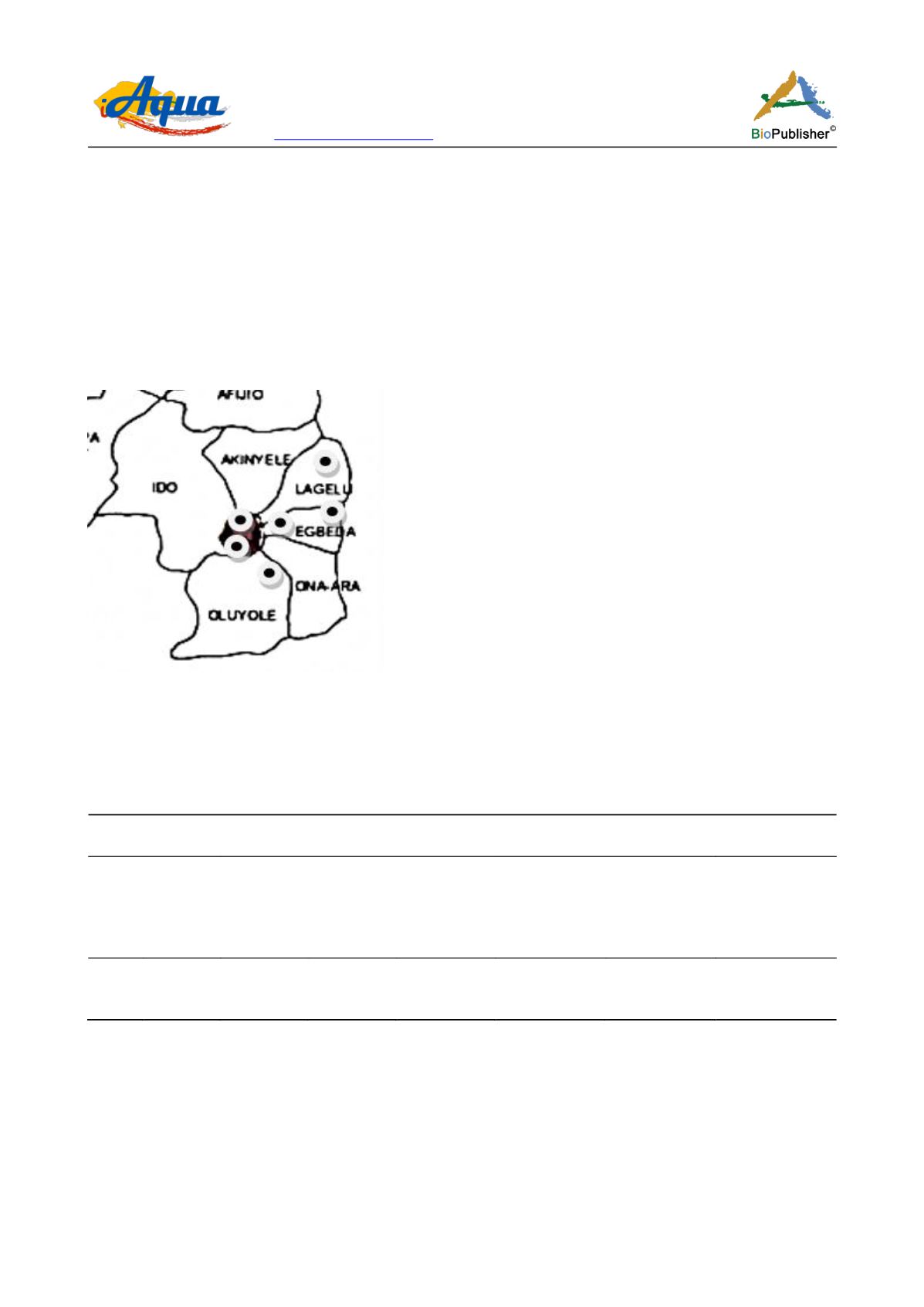
International Journal of Aquaculture, 2017, Vol.7, No. 2, 9
-
14
10
2 Materials and Methods
Six commercial farms (OOF, SFL and KFF operating earthen pond system and VFF, EKF and ASF operating
concrete tank systems) were used in this study (Figure 1). Fingerlings and juveniles of average weight 2.7 ±1.34 g
and 10 ±5.0 g – 20 ±5.0 g, respectively were stocked in each pond and tank. The fish farms were monitored for
the period of two wet seasons (June - September) and two dry seasons (November - February). On the farm
assessment was done for some parameters (pH, nitrites, nitrates, ammonia and temperature) using NT LABS
Pondlab 200 Test Kit
.
Temperature was measured using mercury in glass thermometer
.
Dissolved oxygen and
total dissolved solids (TDS) were analyzed in the laboratory using standard methods for examination of water and
waste water (APHA, 1998). The farms were visited fortnightly for water sampling for four months and replicated
twice. Data were analyzed using ANOVA and the means were separated using Duncan Multiple Range test.
Figure 1 Map showing the study areas
3 Results and Discussion
The results of selected water physico-chemical parameters from different culture systems and seasons are
presented in Table 1, Table 2, Table 3, and Table 4.
Table 1 Mean concentrations of some water quality parameters in earthen pond systems
WET SEASON 1
Farms
pH
Temp.
°
C
DO (mg/L)
TDS (mg/L)
Nitrite (mg/L)
Nitrate (mg/L)
Ammonia (mg/L)
OOF
7.2 ±0.04 28.8 ±0.10
9.0 ±0.01
201
0.04 ±0.01
10.0 ±0.01
0.2 ±0.07
SFL
7.8 ±0.02 30.0 ±0.10
4.5 ±0.02
286
0.10 ±0.02
6.2 ±0.05
0.4 ±0.01
KFF
7.5 ±0.04 27.6 ±0.11
6.4 ±0.01
280
0.25 ±0.02
17.2 ±0.07
0.1 ±0.05
WET SEASON 2
Farms
pH
Temp.
°
C
DO (mg/L)
TDS (mg/L)
Nitrite (mg/L)
Nitrate (mg/L)
Ammonia (mg/L)
OOF
7.1 ±0.02 28.0 ±0.10
15.4 ±0.01
279
0.05 ±0.02
2.40 ±0.01
2.0 ±0.01
SFL
6.8 ±0.09 27.5 ±0.12
5.8 ±0.02
298
0.10 ±0.01
10.0 ±0.01
0.8 ±0.01
KFF
6.9 ±0.04 28.6 ±0.12
7.5 ±0.01
365
0.50 ±0.01
5.2 ±0.02
0.4 ±0.02
pH:
Mean values of pH recorded in the culture systems were 7.23 ±0.03 and 7.36 ±0.07 in earthen pond and
concrete tank, respectively. Bhatnagar and Devi (2013) stated that pH generally between 7.0 and 8.5 is more
optimum and conducive to fish life. According to Santhosh and Singh (2007), the suitable pH range for fish
culture is between 6.7 and 9.5 and ideal pH level is between 7.5 and 8.5, above or below this is stressful to the
fishes. If pH readings are outside this range, fish growth is reduced. At values below 4.5 or above 10, mortalities
occur. There was no significant difference (p > 0.05) in the pH between culture systems and also between seasons
(p > 0.05). The pH values in water samples analyzed showed that water from the culture systems are conducive to
survival of catfish.


